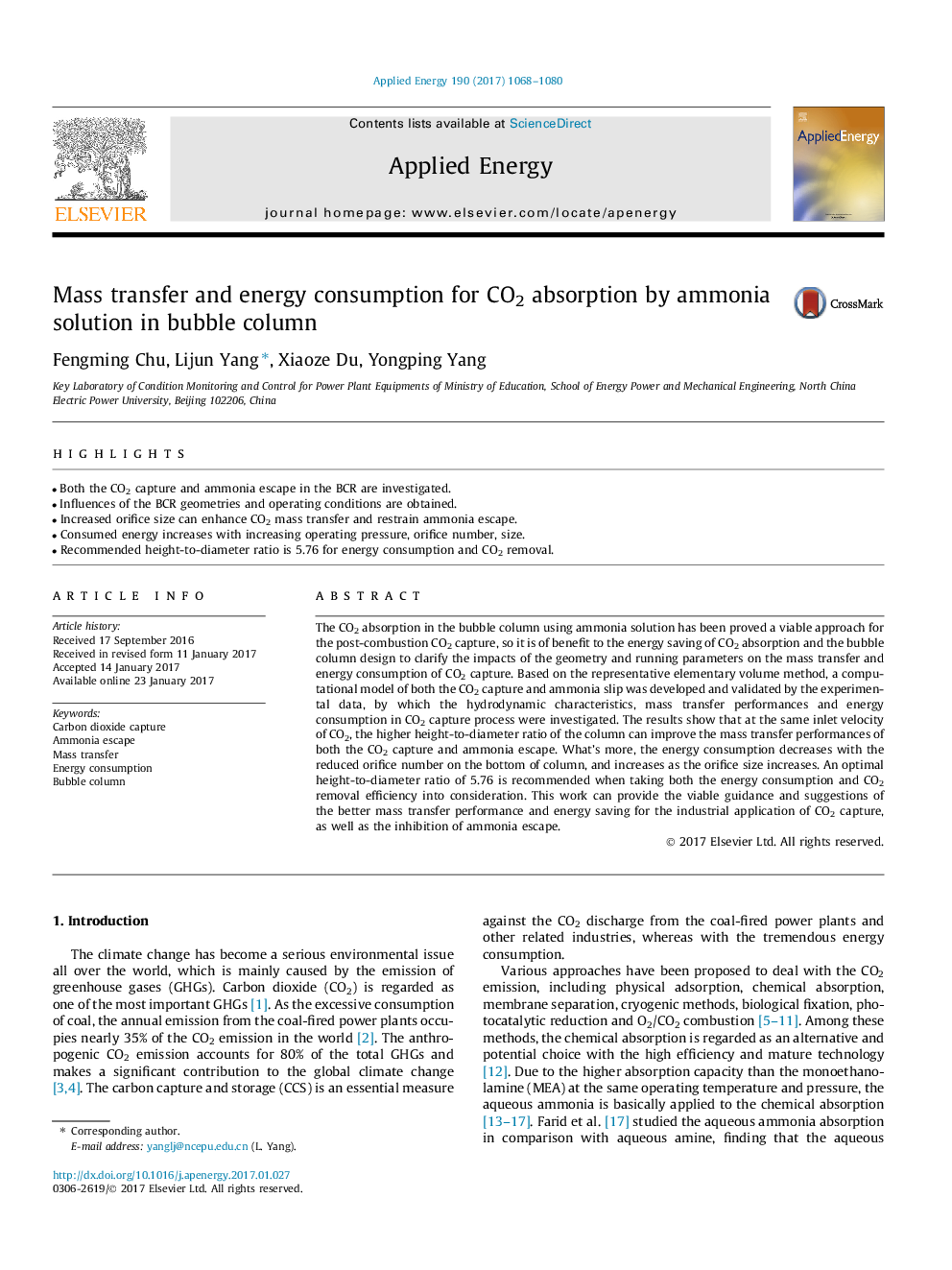| Article ID | Journal | Published Year | Pages | File Type |
|---|---|---|---|---|
| 6478675 | Applied Energy | 2017 | 13 Pages |
â¢Both the CO2 capture and ammonia escape in the BCR are investigated.â¢Influences of the BCR geometries and operating conditions are obtained.â¢Increased orifice size can enhance CO2 mass transfer and restrain ammonia escape.â¢Consumed energy increases with increasing operating pressure, orifice number, size.â¢Recommended height-to-diameter ratio is 5.76 for energy consumption and CO2 removal.
The CO2 absorption in the bubble column using ammonia solution has been proved a viable approach for the post-combustion CO2 capture, so it is of benefit to the energy saving of CO2 absorption and the bubble column design to clarify the impacts of the geometry and running parameters on the mass transfer and energy consumption of CO2 capture. Based on the representative elementary volume method, a computational model of both the CO2 capture and ammonia slip was developed and validated by the experimental data, by which the hydrodynamic characteristics, mass transfer performances and energy consumption in CO2 capture process were investigated. The results show that at the same inlet velocity of CO2, the higher height-to-diameter ratio of the column can improve the mass transfer performances of both the CO2 capture and ammonia escape. What's more, the energy consumption decreases with the reduced orifice number on the bottom of column, and increases as the orifice size increases. An optimal height-to-diameter ratio of 5.76 is recommended when taking both the energy consumption and CO2 removal efficiency into consideration. This work can provide the viable guidance and suggestions of the better mass transfer performance and energy saving for the industrial application of CO2 capture, as well as the inhibition of ammonia escape.
